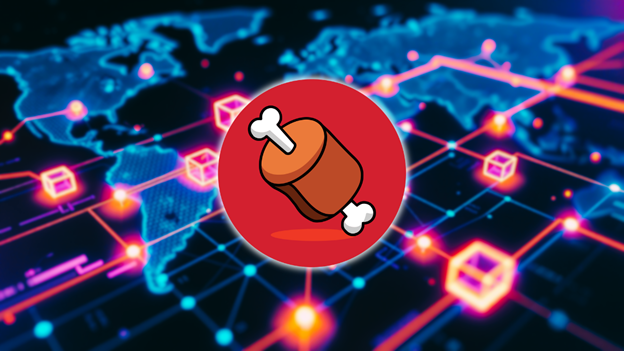0x12…qrst

More than just the digital fuel for Shibarium’s billion transactions, the BONE token serves as a cornerstone within the intricate architecture of the Shiba Inu ecosystem. Its journey involves decentralized governance, complex technical processes ensuring its scarcity, and a stated ambition to be the “passport” for users navigating Shiba Inu’s expanding digital territory. Understanding BONE is key to understanding the mechanics and aspirations behind Shibarium itself.
BONE ShibaSwap wasn’t initially conceived solely as gas for a future network. Its origins lie with ShibaSwap, the ecosystem’s decentralized exchange (DEX).
Here, BONE emerged as the governance token, designed, according to project documentation, to empower the “Shib Army” community. Holding BONE granted users voting rights on proposals related to the DEX, embodying the principle of decentralized decision-making that the project frequently emphasizes.
It formed one pillar of the ecosystem’s initial token trio, alongside the high-supply SHIB and the limited-supply LEASH.
The conception of Shibarium, the Layer 2 scaling solution, marked a pivotal expansion of BONE’s role. Faced with Ethereum’s high gas fees hindering activity within the SHIB ecosystem, developers designated BONE as the native gas token for the new network.
This was a strategic choice. By using a dedicated, ecosystem-specific token for transaction fees – engineered to be significantly cheaper than paying with ETH on Ethereum – Shibarium could offer the low-cost environment necessary to encourage high volumes of activity.
As explored in our cover story, this low-cost structure, facilitated by BONE, is a primary driver behind Shibarium accumulating over a billion transactions. Users acquire BONE to pay these minimal fees, making interaction on the network accessible.
As the launch of Shibarium approached, a crucial technical step underscored BONE’s planned centrality. Project lead Shytoshi Kusama announced the intention to mint the remaining BONE supply (up to its hard cap of 250 million tokens) and then permanently renounce ownership of the BONE minting contract. This meant no more BONE could ever be created, solidifying its scarcity and ensuring the tokenomics were fixed before the L2 network went live.
Kusama framed this move within a narrative of advancing decentralization, stating it was a “necessary step” for starting the blockchain. A significant portion of the minted BONE was allocated for future rewards for Shibarium’s Validators – entities securing the network – and Delegators, users who stake their BONE to support validators.
Executing this wasn’t simple. A technical blog post by developer Kaal Dhairya detailed the intricate process required due to security measures implemented earlier. Ownership of the BONE contract was nested within other contracts, including a TopDog farming contract and a TimeLock contract, ultimately controlled by a Gnosis Safe multisignature wallet requiring 6 out of 9 designated signers to approve actions.
Credit: Wrapped BONE and more…
The process, as outlined by Kaal, involved transferring ownership temporarily, setting reward allocations to zero for existing pools, creating a temporary “dummy token” (named Calcium, explicitly stated as having no value itself), setting up a new liquidity pool for it, updating reward rates to mint the remaining BONE rapidly, and then executing the final renunciation of the contract – all managed through the secure, time-delayed mechanisms of the TimeLock contract. This multi-step procedure, requiring careful execution over days, highlighted the team’s stated commitment to security protocols and irreversible decentralization of the token supply.
With the supply capped and its role as gas solidified, the vision for BONE extends further. According to developer communications, it retains a core governance function, not just for ShibaSwap, but potentially within the “new system” of Shibarium itself. Furthermore, its role in rewarding Validators and Delegators makes it central to Shibarium’s security and operational integrity through staking mechanisms.
Kusama referred to BONE as a “passport to the future,” positioning it as the key credential for participating deeply within the evolving Shibarium ecosystem. It’s the token needed for basic operation (gas), for participating in securing the network (staking/delegating), and potentially for having a voice in its future direction (governance).
From its beginnings as a governance token for ShibaSwap, BONE has evolved into the indispensable component powering Shibarium. It facilitates the low-cost transactions driving volume, anchors the network’s security model through staking rewards, and carries the mantle of governance.
The complex technical steps taken to finalize its supply demonstrate its perceived importance to the ecosystem’s long-term structure. As Shibarium matures and potentially hosts more diverse applications, BONE’s accessibility, price stability, and seamless integration will remain critical factors influencing the network’s success and the realization of Shiba Inu’s broader vision of a decentralized digital nation.
It is, by design, the engine, the key, and the potential voice for users within this specific corner of the blockchain world.